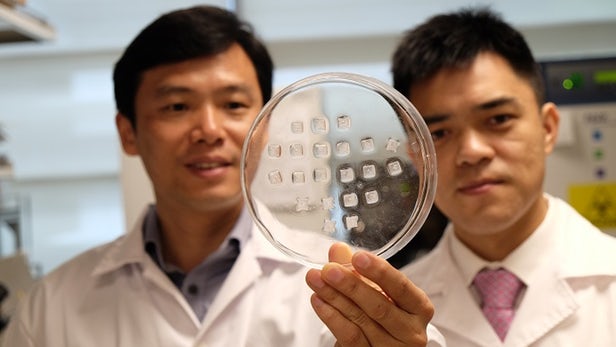
Breaking News
 A timeless clip of Michael Burry explaining how he used credit default swaps...
A timeless clip of Michael Burry explaining how he used credit default swaps...
 The next financial crisis won't start in a bank lobby. It's already brewing in the market
The next financial crisis won't start in a bank lobby. It's already brewing in the market
 The Pro-EU Government of Bulgaria just RESIGNED after 6.5 Million Bulgarians Protested...
The Pro-EU Government of Bulgaria just RESIGNED after 6.5 Million Bulgarians Protested...
Top Tech News
 This tiny dev board is packed with features for ambitious makers
This tiny dev board is packed with features for ambitious makers
 Scientists Discover Gel to Regrow Tooth Enamel
Scientists Discover Gel to Regrow Tooth Enamel
 Vitamin C and Dandelion Root Killing Cancer Cells -- as Former CDC Director Calls for COVID-19...
Vitamin C and Dandelion Root Killing Cancer Cells -- as Former CDC Director Calls for COVID-19...
 Galactic Brain: US firm plans space-based data centers, power grid to challenge China
Galactic Brain: US firm plans space-based data centers, power grid to challenge China
 A microbial cleanup for glyphosate just earned a patent. Here's why that matters
A microbial cleanup for glyphosate just earned a patent. Here's why that matters
 Japan Breaks Internet Speed Record with 5 Million Times Faster Data Transfer
Japan Breaks Internet Speed Record with 5 Million Times Faster Data Transfer
 Advanced Propulsion Resources Part 1 of 2
Advanced Propulsion Resources Part 1 of 2
 PulsarFusion a forward-thinking UK aerospace company, is pushing the boundaries of space travel...
PulsarFusion a forward-thinking UK aerospace company, is pushing the boundaries of space travel...
 Dinky little laser box throws big-screen entertainment from inches away
Dinky little laser box throws big-screen entertainment from inches away
 'World's first' sodium-ion flashlight shines bright even at -40 ºF
'World's first' sodium-ion flashlight shines bright even at -40 ºF
Skin patch puts the burn on body fat

There are already skin patches that help people quit smoking … could patches that help them lose weight be far behind? Well, thanks to research being conducted at Singapore's Nanyang Technological University, the things already exist – for mice, at least.
The underside of each patch is covered with hundreds of microneedles, which are loaded with one of two drugs: either Beta-3 adrenergic receptor agonist or thyroid hormone T3 triiodothyronine. Although both have been shown to reduce body fat by converting energy-storing white fat into energy-burning brown fat, they can have serious side effects if taken orally or via injections.
That's why the patches were developed.
When they're pressed onto an overweight mouse's body for around two minutes, the microneedles (which are thinner in diameter than a human hair) break off and become embedded in the skin. They then harmlessly dissolve, slowly releasing their drug payload directly where it's needed – into the underlying layer of white fat. The drugs subsequently convert it into brown fat, which gets burned off.

 The AI money machine!
The AI money machine!

